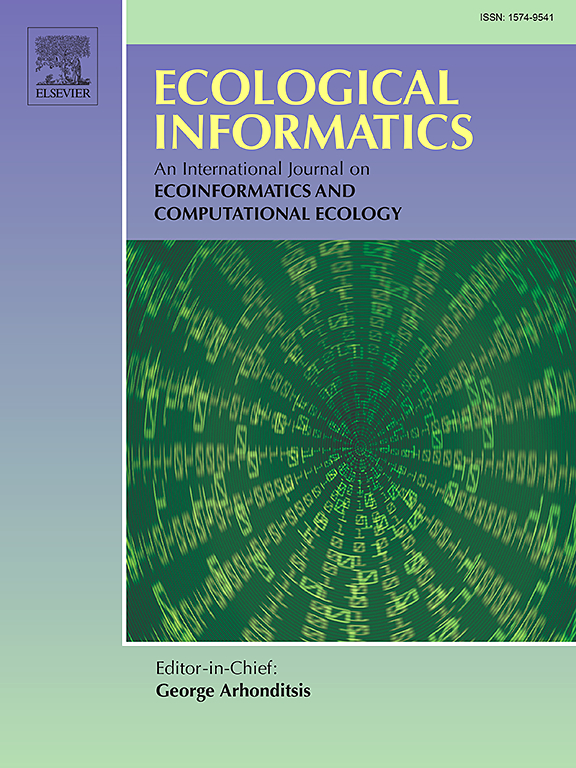Reduced dimensionality space of features using spectral indices for detecting changes in multitemporal Landsat-8 images
IF 5.8
2区 环境科学与生态学
Q1 ECOLOGY
引用次数: 0
Abstract
In this study, spatio-temporal changes in water covers are calculated for Lake Urmia (Iran) from 2013 to 2023 using multi-temporal Landsat-8 OLI (Operational Land Imager) and TIRS (Thermal InfraRed Sensor) multispectral images. The challenge was working in a reduced dimensionality space of characteristics. With this objective, ten spectral water indices have been assessed. Moreover, Land Surface Temperature (LST) maps have been obtained from water bodies for correlation purposes. The evaluation of the indices is developed by K-means (unsupervised) and Random Forest (supervised) machine learning non-parametric classifiers. The total agreement between the classification results and the test data in the case of the Salinity Water Index (SWI) exceeds 95 % (96.00–98.50 %) for Overall Accuracy (OA) and 0.80 (0.84–0.99) for F1-Score. Furthermore, a strong correlation is observed between the LST and the SWI index, with correlation coefficient values exceeding 0.77 in all cases. These results show the effectiveness of the SWI spectral index in detecting changes in water area, particularly for tracking variations over time in hyper-saline water bodies such as Lake Urmia. In this case, the water coverage observed from 2013 to 2023 shows a slight recovery in 2016, followed by a more significant increase in 2019 and 2020. However, in recent years, the lake has experienced a dramatic decline, with water coverage sharply decreasing by 2023.
求助全文
约1分钟内获得全文
求助全文
来源期刊

Ecological Informatics
环境科学-生态学
CiteScore
8.30
自引率
11.80%
发文量
346
审稿时长
46 days
期刊介绍:
The journal Ecological Informatics is devoted to the publication of high quality, peer-reviewed articles on all aspects of computational ecology, data science and biogeography. The scope of the journal takes into account the data-intensive nature of ecology, the growing capacity of information technology to access, harness and leverage complex data as well as the critical need for informing sustainable management in view of global environmental and climate change.
The nature of the journal is interdisciplinary at the crossover between ecology and informatics. It focuses on novel concepts and techniques for image- and genome-based monitoring and interpretation, sensor- and multimedia-based data acquisition, internet-based data archiving and sharing, data assimilation, modelling and prediction of ecological data.
 求助内容:
求助内容: 应助结果提醒方式:
应助结果提醒方式:


